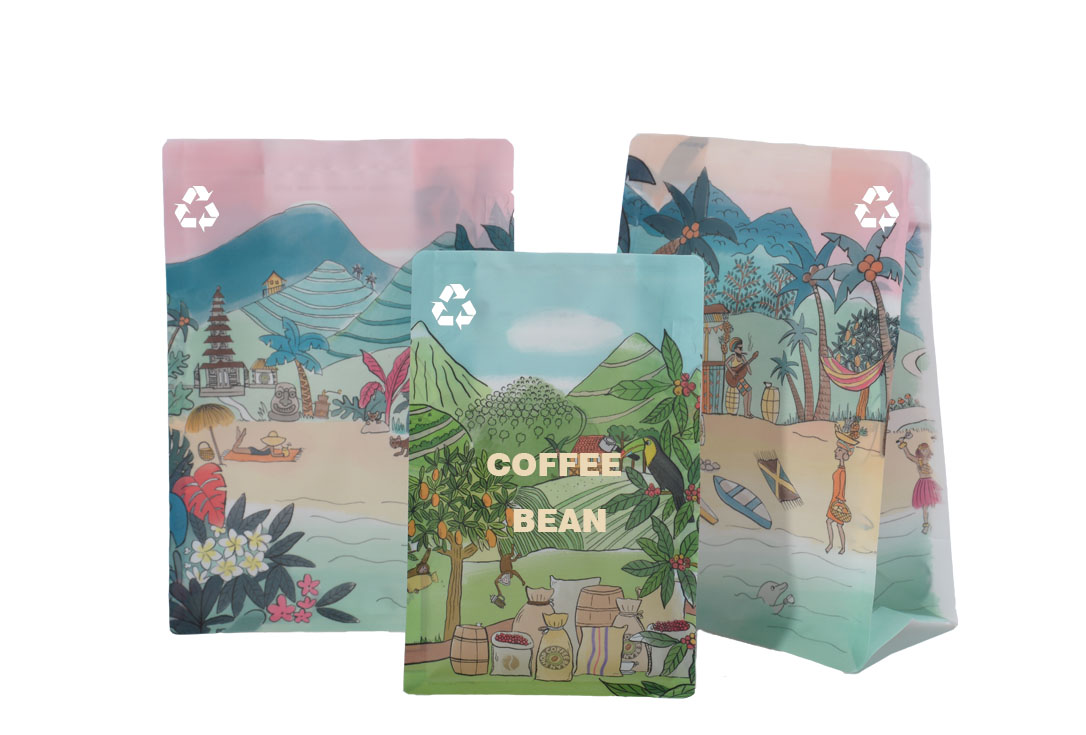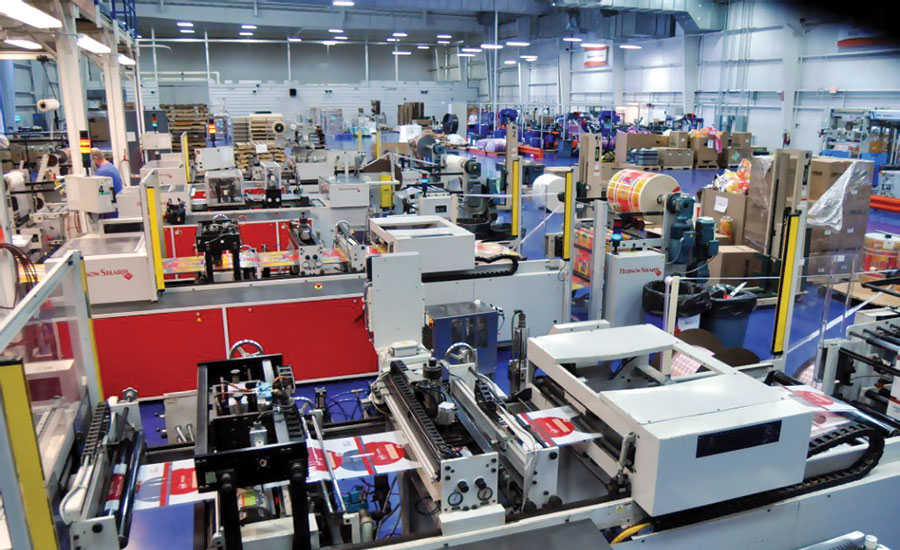🌱 Introduction: Rethinking Coffee Packaging
Coffee is more than just a drink—it’s a global ritual, enjoyed by millions daily. But the packaging that keeps it fresh has a major downside: waste. Traditional coffee bags, often made from a mix of plastic and foil, are not biodegradable, leading to overflowing landfills.
Enter recyclable coffee bags—a game-changing solution crafted from materials like low-density polyethylene (LDPE) and compostable plant-based alternatives. These innovations not only cut down waste but also reshape the industry’s approach to sustainability. In this white paper, we’ll explore their environmental impact, consumer benefits, economic considerations, and technological advancements that make them the future of coffee packaging.

🌎 Environmental Impact: Tackling the Waste Crisis
📉 The Waste Problem
Each year, billions of coffee pouches and single-serve bags end up in landfills. Traditional coffee packaging, made from a mix of plastic and aluminum, can take up to 500 years to break down, releasing toxins into soil and water.
Recyclable coffee bags offer a sustainable alternative:
- LDPE bags can be melted down and repurposed into new products, reducing the need for virgin plastic.
- Compostable bags, made from plant-based materials like corn starch or sugarcane, break down naturally, reducing landfill waste and lowering carbon emissions.
📊 Hard Numbers, Big Impact
- Recycling one LDPE coffee bag can save 1.5 lbs of CO₂ emissions compared to producing a new one.
- An estimated 8 million tons of plastic enter the oceans annually, harming marine life—switching to recyclable bags helps curb this crisis.
- Composting coffee packaging reduces methane emissions, a greenhouse gas 25x more potent than CO₂.
♻️ The Recycling Reality Check
Recycling works only if done correctly. Many bags end up in landfills due to lack of awareness about local recycling programs. Education and infrastructure improvements are crucial for maximizing the impact of recyclable coffee bags.
☕ Consumer Experience: Taste, Convenience, and Sustainability
🎯 Does It Affect Coffee Quality?
Absolutely not! Brands like Driftaway Coffee and MTPak have developed LDPE and plant-based bags that effectively block oxygen and moisture—the main culprits of stale coffee. Blind taste tests confirm that coffee stored in recyclable packaging retains the same rich flavors as traditional bags.
⏳ Convenience Meets Conscience
- Single-serve recyclable bags offer the same quick and mess-free experience.
- A 2023 Nielsen survey found that 73% of consumers would pay extra for sustainable products.
- Brewing coffee without adding to landfill waste makes the experience even more rewarding.
📲 Smart Packaging: A New Era
Innovations like QR codes on packaging now guide consumers on:
- Where to recycle their bags.
- The coffee’s origin and sustainability journey.
- Step-by-step composting and disposal tips.
💰 Economic Impact: Costs, Savings, and Brand Loyalty
💸 Upfront Costs vs. Long-Term Gains
Switching to recyclable materials like LDPE or bioplastics can increase packaging costs by 20%. However, brands that adopt sustainable packaging gain customer loyalty and can charge a premium.
📈 Market Trends and Brand Loyalty
- A 2022 McKinsey report showed that companies with strong sustainability efforts outperform their competitors by 21% in profitability.
- Younger consumers (Millennials & Gen Z) prefer brands that prioritize sustainability, making recyclable coffee bags a smart investment.
🔄 Closed-Loop Systems: The Future of Packaging
Companies are developing closed-loop systems, where consumers can return used coffee bags to be repurposed into new ones—cutting costs and reducing environmental impact.
🧪 Technological Innovations: The Science Behind Recyclable Coffee Bags
🔬 Engineering the Perfect Coffee Bag
New materials and innovations are pushing the boundaries of coffee packaging:
- LDPE Bags: Light, flexible, and fully recyclable.
- PLA (Polylactic Acid) Bioplastics: Made from renewable sources like corn starch, these materials keep coffee fresh and break down in composting facilities.
- Nano-coatings: Ultra-thin barrier layers improve protection without adding non-recyclable bulk.
🔄 Solving the Valve Dilemma
Degassing valves (which release CO₂ from fresh coffee) are traditionally made from non-recyclable plastic. Now, LDPE-based or compostable valves are entering the market, aligning with fully recyclable bag designs.
🌟 Case Studies: Leading Brands Making the Switch
☕ Driftaway Coffee: Compostable Pioneers
- 100% compostable single-serve bags.
- Led to a 30% boost in customer retention.
🌍 MTPak Coffee: Recyclable Done Right
- Developed LDPE bags that fit into standard recycling systems.
- Attracted major coffee brands seeking sustainability.
🔄 Contact Coffee Company: Hybrid Packaging for a Greener Future
- Uses biodegradable inner bags paired with recyclable cardboard boxes.
- Sales rose 25% post-switch.
🚀 Future Outlook: The Next Decade in Coffee Packaging
🌿 Bioplastics on the Rise
Materials like hemp, bamboo, and sugarcane will replace petroleum-based plastics, further reducing coffee packaging’s carbon footprint.
🔄 Advanced Recycling Systems
New chemical recycling technologies will allow previously non-recyclable coffee bags to be transformed into reusable raw materials.
📡 Smart Packaging
Imagine coffee bags equipped with NFC chips that send freshness alerts or provide interactive sustainability tips. Augmented reality (AR) experiences will soon educate consumers on their coffee’s journey from farm to cup.
✅ Conclusion: A Greener Path Forward
Recyclable coffee bags aren’t just a trend—they’re a necessary shift toward sustainability. While challenges remain, the benefits far outweigh the costs.
🚀 Recommendations:
- For coffee brands: Invest in sustainable materials, educate consumers, and adopt closed-loop recycling systems.
- For consumers: Support brands that prioritize the planet, learn your local recycling rules, and make conscious choices.
Together, we can make coffee packaging a force for good—one bag at a time. ☕🌍



